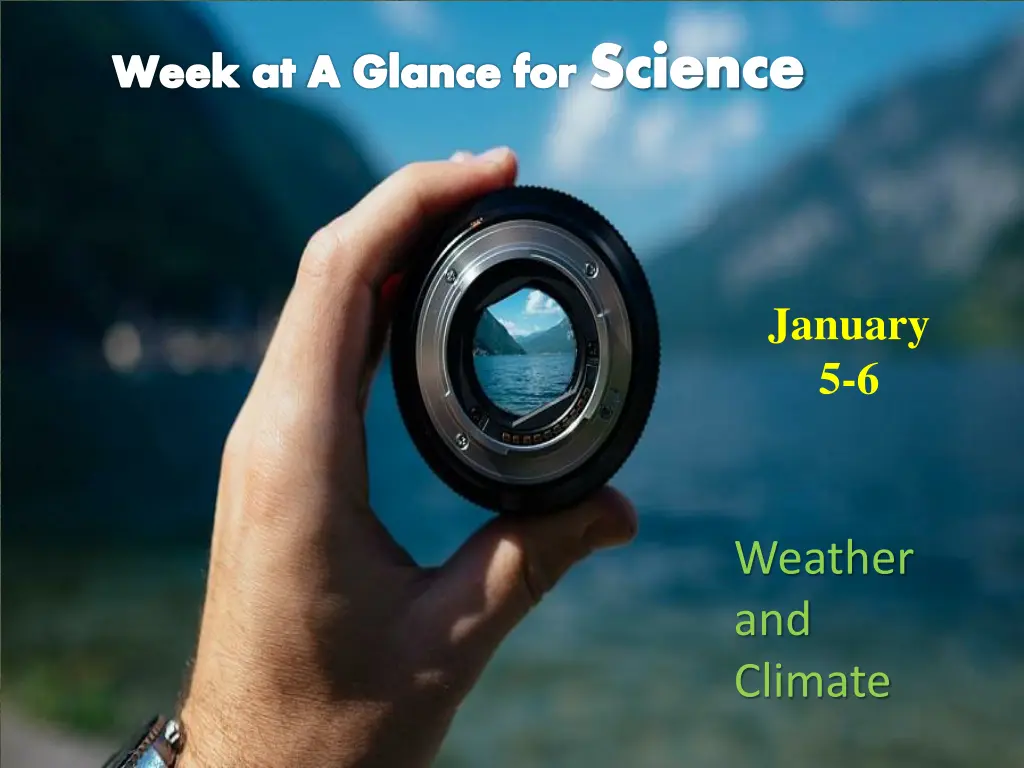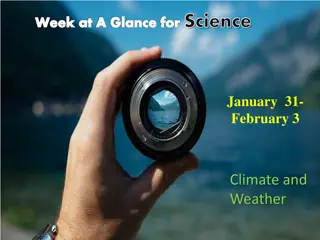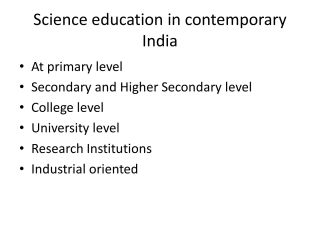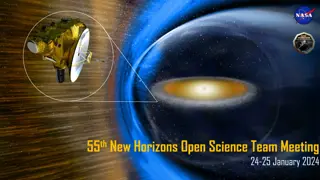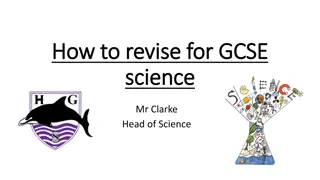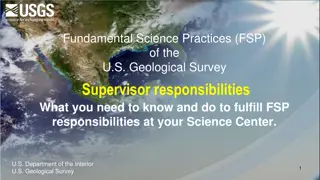Week at A Glance for Science
The sun, land, and water affect climate and weather. Analyze Earth's atmospheric layers, energy transfer processes, wind systems, and meteorological events. Investigate the sun's heat transfer and its influence on air, land, and water. Learn about air pressure, weather fronts, and the effects of ocean evaporation on weather patterns. Enhance understanding through data analysis and modeling. Engage in hands-on investigations and develop explanations for various weather phenomena.
Download Presentation
Please find below an Image/Link to download the presentation.
The content on the website is provided AS IS for your information and personal use only. It may not be sold, licensed, or shared on other websites without obtaining consent from the author. Download presentation by click this link. If you encounter any issues during the download, it is possible that the publisher has removed the file from their server.
Presentation Transcript
Week at A Glance for Science January 5-6 Weather and Climate
S6E4. Obtain, evaluate, and communicate information about how the sun, land, and water affect climate and weather. a. Analyze and interpret data to compare and contrast the composition of Earth s atmospheric layers (including the ozone layer) and greenhouse gases. (Clarification statement: Earth s atmospheric layers include the troposphere, stratosphere, mesosphere, and thermosphere.) b. Plan and carry out an investigation to demonstrate how energy from the sun transfers heat to air, land and water at different rates. (Clarification statement: Heat transfer should include the processes of conduction, convection, and radiation.) c. Develop a model demonstrating the interaction between unequal heating and the rotation of the Earth that causes local and global wind systems. d. Construct an explanation of the relationship between air pressure, weather fronts, and air masses and meteorological events such as tornados and thunderstorms. e. Analyze and interpret weather data to explain the effects of moisture evaporating from the ocean on weather patterns and weather events such as hurricanes.
Plan and carry out an investigation to demonstrate how energy from the sun transfers heat to air, land and water at different rates. (Clarification statement: Heat transfer should include the processes of conduction, convection, and radiation.)
Thursday, January 5 Standard: Plan and carry out an investigation to demonstrate how energy from the sun transfers heat to air, land and water at different rates. (Clarification statement: Heat transfer should include the processes of conduction, convection, and radiation.) Learning Target: I can explain how energy from the sun transfers heat to air, land, and water Warm-up: Chapter 13 Workbook Packet Work Session: Introduce New Unit: 3 Weather and Climate; Conduction, Convection, and Radiation; Video; Introduce Science Fair Project Closing: Think Pair Share Reminders:
Friday, January 6 Standard: Plan and carry out an investigation to demonstrate how energy from the sun transfers heat to air, land and water at different rates. (Clarification statement: Heat transfer should include the processes of conduction, convection, and radiation.) Learning Target: I can explain how energy from the sun transfers heat to air, land, and water Warm-up: Chapter 13 Workbook Packet Work Session: Introduce New Unit: 3 Weather and Climate; Conduction, Convection, and Radiation; Video; Introduce Science Fair Project Closing: Think Pair Share Reminders:
Homework for Science Monday: Tuesday: Wednesday: Thursday:
